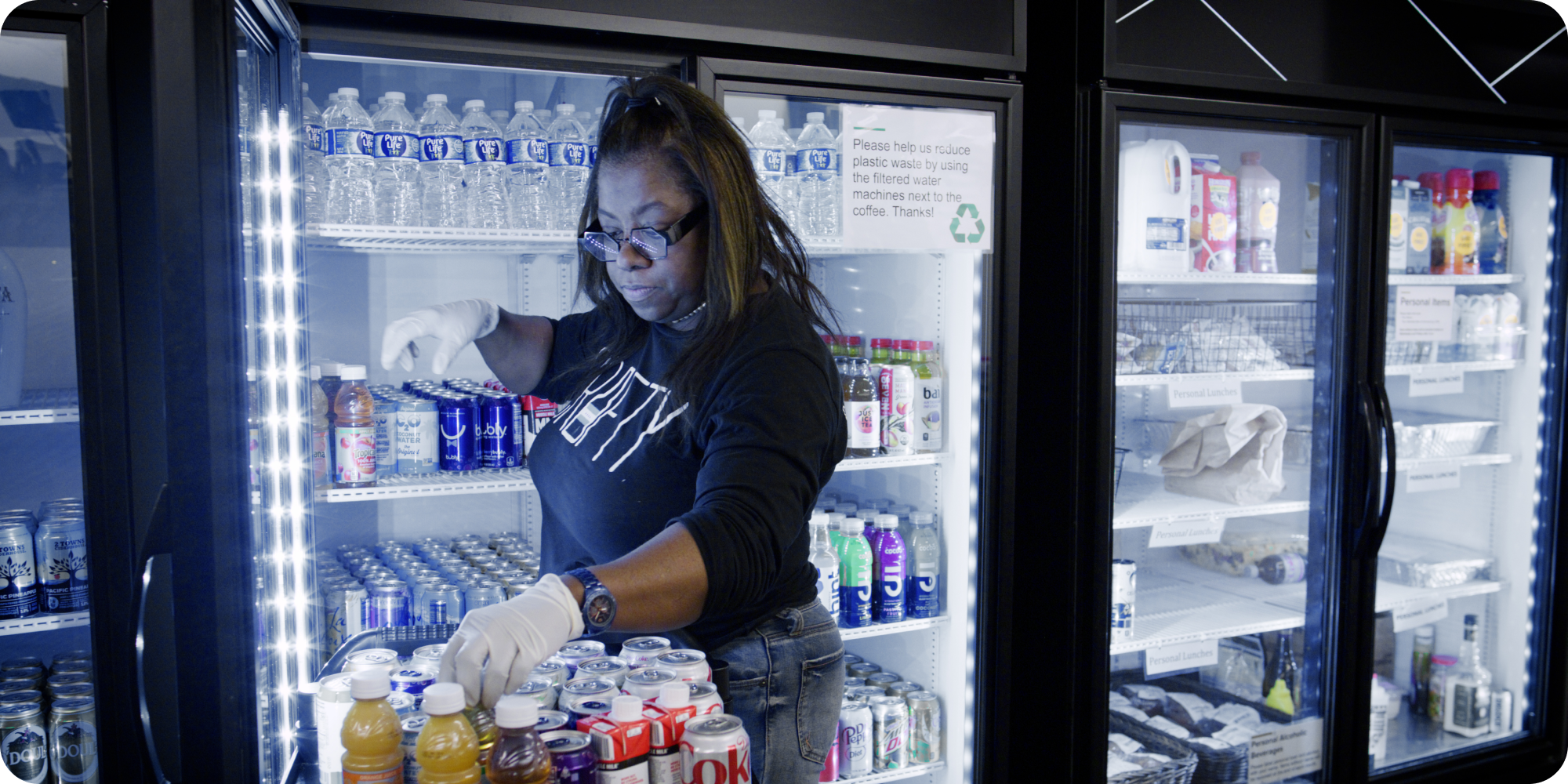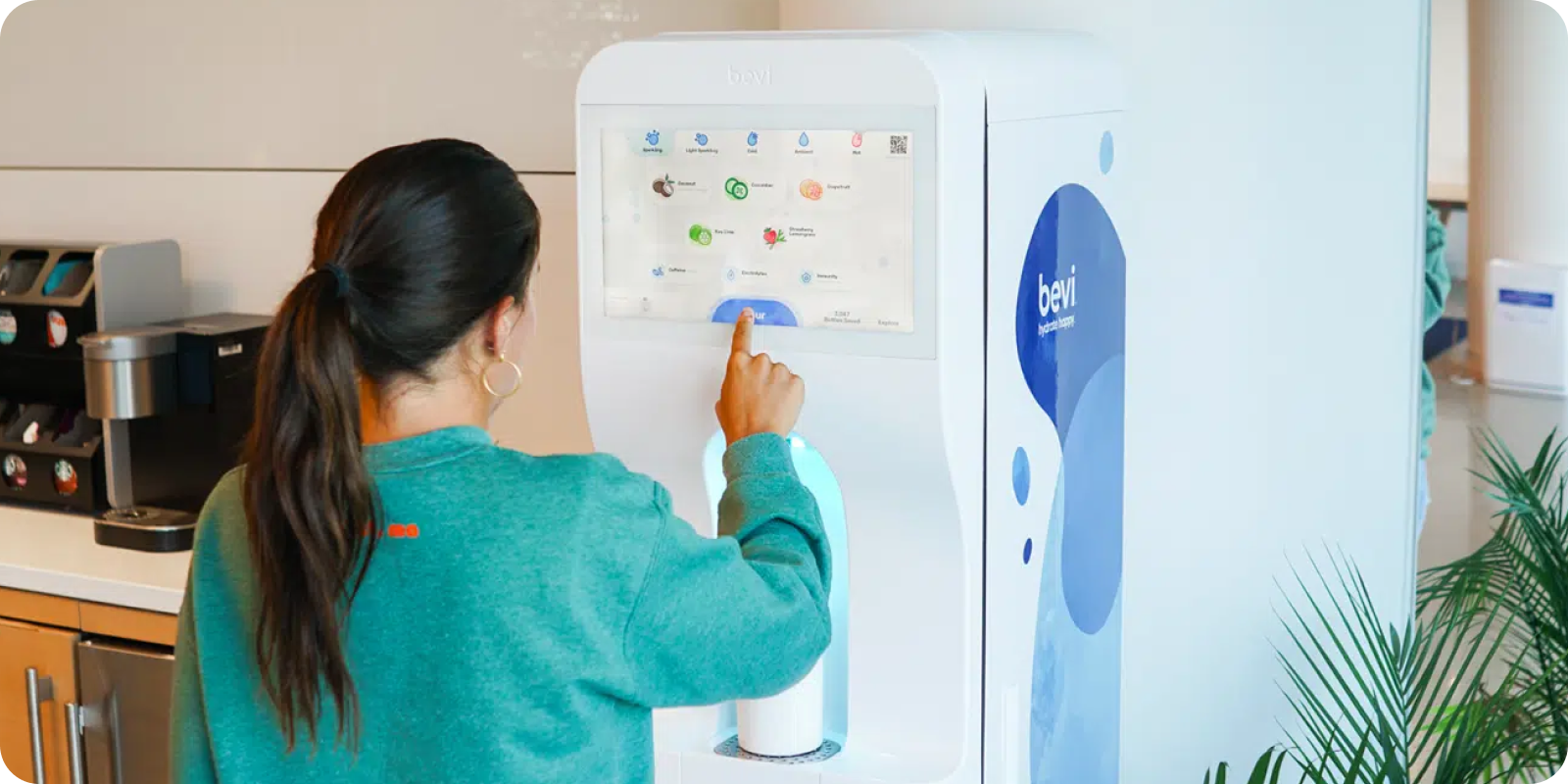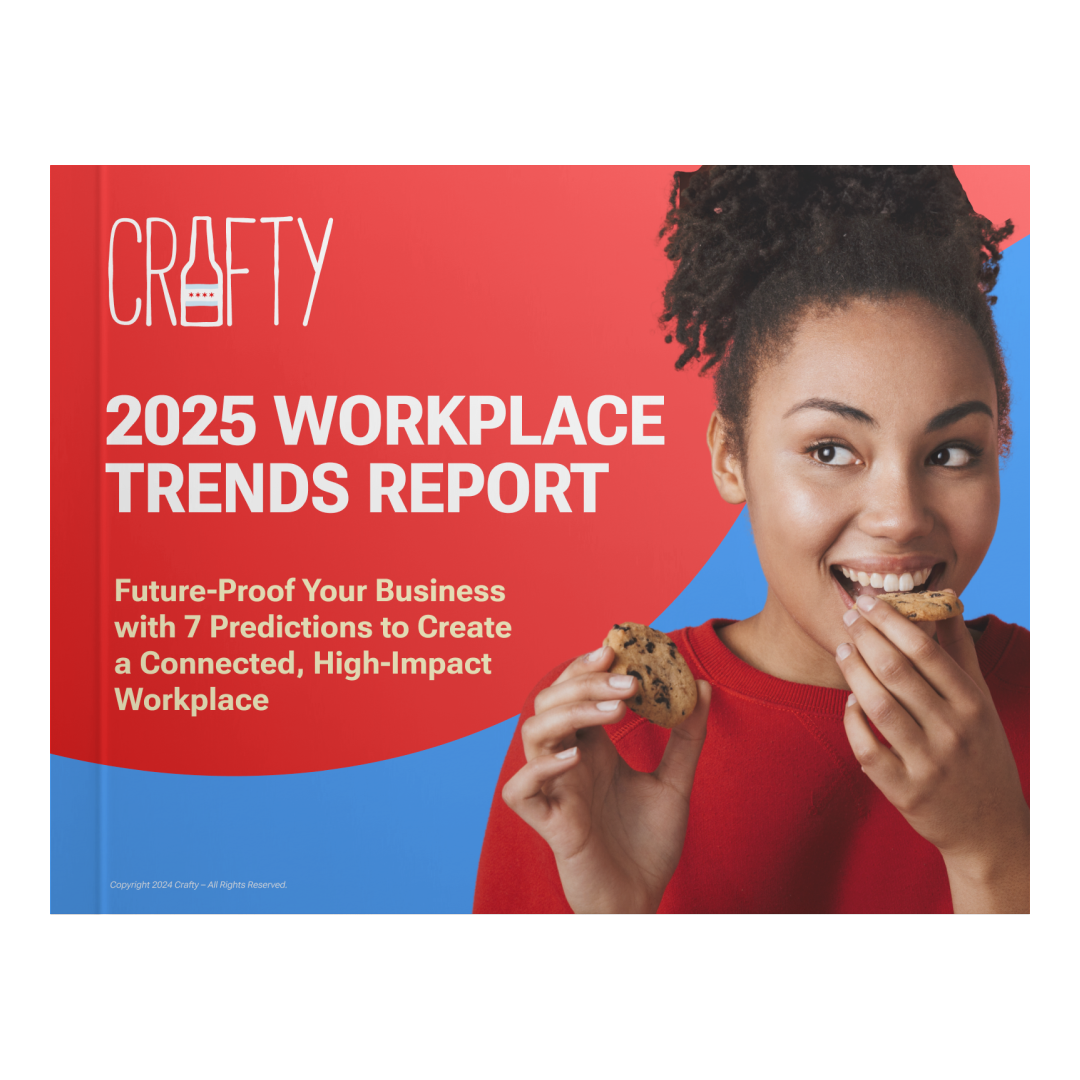The Evolution of the Watercooler
Explore the importance of the office watercooler, office drink trends, recent innovations in corporate water machines and where Crafty can help.
Ah, water. Essentially, it's a life force. Our bodies are made up of 60% water, the earth is covered by about 71% water … you get the gist.
But water as a drinking beverage is much more than having something to sip on hand when you feel parched. Proper hydration is an essential component of health. The National Academy of Medicine recommends a daily fluid intake of 13 cups for healthy men and 9 cups for healthy women (with 1 cup equaling 8 ounces). The Mayo Clinic ups that recommendation to about 15.5 and 11.5 cups, respectively, but regardless of what measurement you use, the truth is that most Americans are dehydrated. Nearly 80% of workers self-report that they don't drink enough, despite the fact that having access to healthy drinking water in the workplace is a federal mandate. Negative health implications aside, experts also say even mild dehydration can have a negative impact on productivity, energy level and alertness, too.
All this to say, the watercooler is an important part of the workplace, and that goes beyond the benefits of staying properly hydrated (though that is crucial for both blue and white-collar workers). The watercooler is a key cultural aspect of nearly every workplace. Introduced in the workspace for the first time in 1939, this low-tech water dispenser has since become a staple of American work life. Below, we explore the evolution and importance of the office watercooler, including recent innovations, its place in the ever-changing office landscape, and where Crafty can help.
2025 WORKPLACE TRENDS REPORT
7 PREDICTIONS TO FUTURE-PROOF YOUR WORKPLACE
Discover seven research-backed predictions and actionable strategies to transform your workplace into a connection catalyst that drives meaningful results.
The Origins of Watercooler Culture

For many office workers, Monday morning catch-ups around the watercooler have become an anticipated tradition, or at the very least, a common event that unfolds rather naturally. Ever since workspaces began to provide communal water sources for employees in the early 20th century, people have been "gathering 'round the watercooler,” to do more than just hydrate, but to join in the unofficial town square of the workspace—a hub for social interaction and informal networking.
As industrialization led to the rise of large-scale office environments, watercooler culture quickly followed. The watercooler became a place where employees congregated, and it’s where they found opportunities to bond, exchange ideas, and build camaraderie. What began as a simple (and since mandated) utility quickly evolved into a cornerstone of workplace culture, shaping how colleagues connect and collaborate.
In both early office and public-facing workspaces, the watercooler was a place that was generally hidden from view. Though done partly to keep this hidden from customers or guests, it had the added benefit of being a special, reserved place for employees, helping foster a sense of inclusion and camaraderie. Over the last couple of decades, that idea has shifted. Most modern offices have moved the watercooler to a more open, central location, particularly amidst the ride of open-floor style offices. Instead of being tucked away, the watercooler (in all of its modern forms) is often now somewhere that can be seen by almost anyone in the office, which helps to spark chance encounters and impromptu meetings that can spark discussion and innovation.
Move Over Water, There’s More Options Now

While OSHA requires all employers to provide potable water for their employees, going above and beyond goes an incredibly long way in making employees feel valued and keeping them hydrated—and happy, too. Plus, with a welcomed increased focus on the importance of health and wellness in the workplace and a steadily growing need to diversify drinking options, there’s a significant and growing demand for healthy options that still taste great versus traditional sugary drinks from, say, a vending machine.
By providing options like flavored water, fruit-infused drinks, herbal teas, carbonated waters and other low-sugar, wellness-driven beverages, employers can cater to diverse preferences and tastes. Organizations can also show a commitment to developing and sustaining a healthier, happier and more personalized work environment.
Water, But Make It High Tech

In addition to growing beverage options, advancements in technology and the introduction of AI have further revolutionized office beverage services — ushering in a new era of convenience and customization. Automated water dispensers, IoT-enabled appliances, and personalized drink customization options have become increasingly common, allowing employees to easily access their preferred beverages. Take the Bevi, for example, a smart water machine that allows users to completely personalize their water with everything from carbonation levels to flavors and enhancements with an added focus on sustainability. The machine has the ability to pour about 90 glasses per hour, saving up to 50,000 plastic water bottles or cans from landfills and saving employers thousands of dollars in the process.
The integration of technology has not only streamlined the process of beverage consumption but has enhanced employee satisfaction and productivity by minimizing disruptions, maximizing convenience, building connections and providing cost-saving, sustainable options that previously did not exist.
The Future of the Office Watercooler Connection
Looking ahead, the future of office watercooler culture is poised for evolution and change. Driven by emerging trends and innovations, while also keeping up with office dynamic shifts from remote and hybrid work options, it's evident that while physical gatherings may become less frequent, the need for social interaction and informal networking remains unchanged.
So what lies on the horizon? Smart hydration trackers, customizable hydration plans, and AI-driven recommendations based on individual preferences and health metrics are only a few examples, promising to optimize employee well-being and foster a greater sense of community and connection within the workplace. As such, beverages will continue to play a pivotal role in fostering connection and camaraderie among distributed teams, whether through virtual coffee breaks or shared hydration goals. Companies will need to continue to find innovative ways to leverage beverages to cultivate community in remote and hybrid work environments.
The watercooler is so much more than just a watercooler — it’s an essential, multi-functional component of any office. It helps create connections and camaraderie, fosters creative discussion and team-building opportunities, and, yes, keeps teams hydrated. The evolution of office beverages mirrors much bigger, broader shifts in workplace culture and values. As the workplace continues to grow and evolve rapidly, so will the role of office watercoolers and beverage options, with all the social benefits and opportunities that come along.
CRAFT
A BETTER
WORKPLACE
Elevate your office food and beverage program with enhanced services managed in one innovative, centralized platform.


